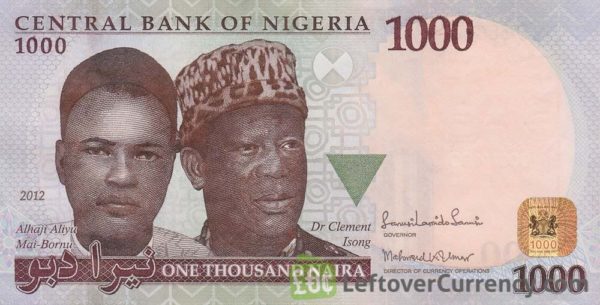The CBN no longer shows an exchange rate on the home page of its website, having previously carried a rate of NGN379 per US Dollar. This may suggest that the unification of rates reportedly pledged to the IMF ahead of the disbursement under the rapid financing instrument in April 2020 has materialised.
Indeed, the federal finance minister was quoted in March as saying that the rate at the investors’ and exporters’ window (I&E) was the rate applied for the monthly distributions from the Federation Account Allocation Committee. (The same cannot be said for the exchange-rate assumption in the FGN’s 2021 budget.) Unification would meet the call from the IMF’s executive board in the staff report issued in February 2021 after the Article IV consultations.
Since the rate of NGN379 applied to relatively few transactions, the weightier issue is the rate at which the CBN makes regular sales of fx to set groups of end-users such as the bureaux de change and that at the I&E window.
We get a sense of the CBN’s thinking from the authorities’ views on recommendations in the staff report. The Fund calls for a unified, market-clearing exchange rate for the removal of distortions, the easing of pressure on the current account and the boost to capital inflows including foreign direct investment (FDI).
The staff report estimates that the naira exchange rate (the then official rate) was 18.5% overvalued. It also calculates that a 10% devaluation would push headline inflation up by 2.5 percentage points although the pain would be mitigated by the current use of the parallel market by the private sector to meet its import requirements.
Without directly commenting on the staff calculation, the authorities stress the impact of naira depreciation on inflation. They see no need for exchange-rate adjustment on the grounds that pressures in the market were due to global factors (and that EM investors would only return once the health crisis had ended).
The authorities add that the CBN was addressing the backlog of fx payments. The staff report has a figure of about USD2bn for delayed divestment by foreign portfolio investors (FPIs).
For the IMF, we restate our view that naira overvaluation is just one of several obstacles to FDI, and not the largest. For the authorities, we note that EM investors have returned to several markets such as Egypt without waiting for the end of the crisis.
There is movement on the I&E window, which operates in official parlance on a “willing buyer, willing seller” basis. On Friday the rate closed at NGN412, having retraced from an intra-day low of NGN427. According to the FMDQ, its weakest point has been NGN438 on 07 April.
As we have often said, we do not see any dramatic change in the exchange-rate regime, which the CBN terms a managed float. It has long-held doubts about a more market-determined system. There are several routes to an easing of the current pressure and to an accumulation of reserves, including: a boost to oil earnings (ongoing), Eurobond issuance, new multilateral loans and the proposed allocation of SDRs to all IMF members. We think that the CBN may have identified one or more of these routes as its release.
We see a rate of NGN435 on the I&E window at end-year. We search in vain for signs that the CBN has revised its thinking on exchange-rate policy. It makes small rate adjustments when it feels it has no choice. Last time around, it launched its fx reforms in March/April 2017 and was rewarded with sizeable inflows from FPIs. A repeat is now unlikely in view of the backlog.
It is unclear if the World Bank will release its USD1.50bn budget loan now that the CBN has moved towards unification. We would not be surprised if it looks for further reforming signals.

